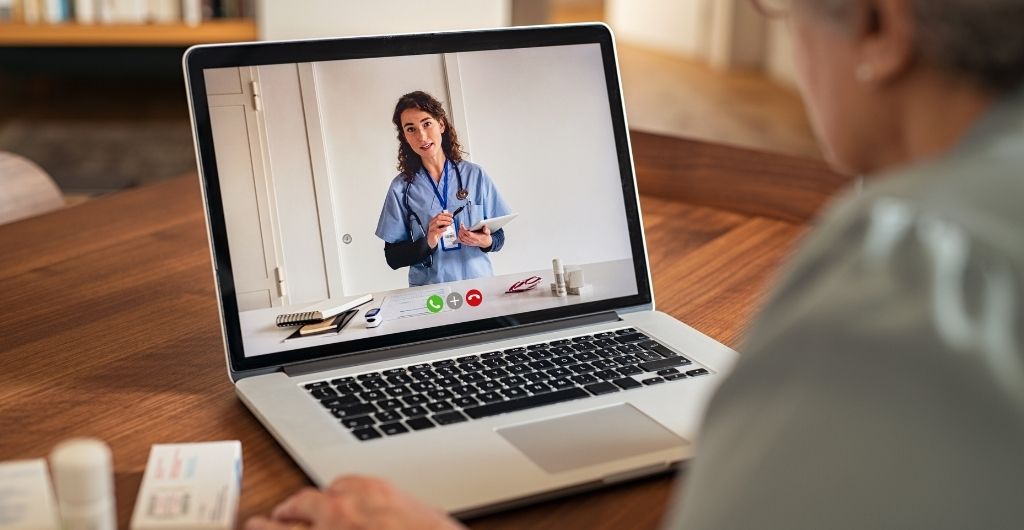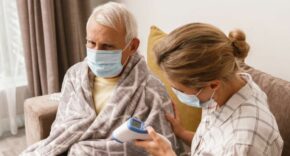
By Prof Sudip Ghosh, Clinical Professor of Community Medicine, Leicestershire Partnership NHS Trust
The Leicestershire Partnership NHS Trust (LPT) Virtual Community Ward Service is a bespoke service, set up to deliver an integrated digital health solution for patients diagnosed with heart failure (HF) or chronic pulmonary obstructive disease (COPD). The service was set up as part of the response to the COVID-19 pandemic and is being delivered by the HF and Respiratory specialist teams within the Trust. The service aims to facilitate empowerment, self-management and activation of patients through a managed care model that supports people in their own home. Learnings from an initial 12-week pilot have established best practices that can form the foundation for embedding digital clinical pathways across our services and future preparedness plans.
Accelerated demand
With the onset of the COVID-19 pandemic, community providers were challenged in the way that they connected to patients. The imperative was to look at new ways to provide safe and responsive care for our patients, by embedding technology within our clinical pathways.
The specialist community cardiorespiratory team at LPT had successfully been using a remote monitoring / telemedicine platform, CliniTouch Vie (CTV), for the remote monitoring of patients. During the COVID-19 pandemic NHS providers had accelerated their use of remote monitoring to reduce face to face contact in line with national guidelines, and to ensure patient and staff safety. With positive willingness from clinicians, the use of this technology within the existing community Heart Failure and Respiratory Rehabilitation team within LPT was accelerated with the following aims:
- Increase capacity of the existing clinical teams to cope with increased caseloads due to COVID-19 discharges
- Reduce face to face contact between clinicians and patients (to minimise risk of COVID-19 infection)
- To maintain and if possible, improve patient care for identified at risk groups
- Reduce demand for hospital admissions through more proactive care
- Demonstrate ongoing sustainability and system change
- Increasing clinical capacity
This project was developed rapidly in March 2020 to ensure continuity of service during the expected pandemic for COPD & HF individuals with complex health needs and a very urgent care need. The priority was to ensure they would have access to a team of skilled professionals, to provide the care they need to remain independent, while releasing capacity within the local healthcare system.
Deployment started in early April 2020, with the official commencement date of 20th April 2020.
Outcome 1 – Increase capacity:
The following table shows the position of clinical caseloads 12-weeks before the deployment of the technology, on the deployment date and at the end of the 12-week pilot review period.
During the pilot, caseload numbers varied significantly due to the COVID-19 caseload review process undertaken to position the teams to be able to rapidly accept additional patients into their caseloads. While the expected surge in COVID-19 patients did not occur, referral rates to the respiratory and HF services from primary and secondary care significantly reduced during the 12-week pilot as we responded to the pandemic.
Reduce face-to-face contact:
During this period, the number of face-to-face appointments also reduced:
27th Jan – 19th April 2133
19th April – 13th July 1121
This reflects the reduction in community-based clinics, with 1:1’s occurring through home visits and the deployment of telemedicine to support patients.
In the 6 weeks prior to deployment there were 550 home visits in an overall managed population of 872 patients.
In the first 6 weeks after deployment there were 413 home visits in an overall managed population of 1099 patients.
During the last week of deployment only 4.4% of Heart Failure and 0% of COPD patients received a home visit.
One of the team’s respiratory clinicians commented: “This is the first time that I have used telehealth to monitor my COPD patients. I have found this an extremely valuable and resourceful tool to remotely manage complex patients in the community, especially within the midst of the deadly COVID-19 global health pandemic.”
Embedding best practice
Learnings from this initiative are being used by LPT and our commissioners as we redesign all our services at a wider level. This is in response to COVID-19 and preparations for ongoing waves; the development of digital services generally in the NHS; and to inform future preparedness plans.
In terms of best practices, monitoring the speed at which patients’ results are reviewed by the clinician is important to ensure maximum benefit from the system and patient safety. This was a key criteria to ensure everyone gained from the initiative.
Using the remote monitoring technology, the system uses approved clinical algorithms to give patients a risk rating based on their vital signs readings and patient questionnaire responses. The highest risk rating is red and of those questions that received a red risk rating during the trial period, (2322 occasions), 98% were reviewed by clinical teams within 24 hours.
Very few answers were classified as amber, indicating that most patients’ readings are either normal (green), or are outside acceptable parameters and require clinical intervention. There were 3543 responses that were classified as green.
The frequency of red alerts and how quickly they were reviewed by the clinicians highlights the importance of monitoring potential deterioration in patients through remote monitoring. This timely clinician review may have prevented further deterioration of the patient and also prevented unnecessary face to face contacts or contact with other health care services in the wider system.
This, together with the data from the number of increased telephone and video contacts would support that patient care for identified at risk groups could be maintained and if possible, improved during the pandemic (and beyond).
Indeed, 88% of respondents reported that the solution has helped them to self-manage; 65% of patients felt more confident to stay safe at home (with 35% feeling about the same); 65% of patients said that remote monitoring has helped them not visit their GP; and 61% of patients have not had to visit their GP since using the technology.
Conclusion
The acceptability of patients and clinicians to utilise the technology has been very good. LPT intends to continue with this digital pathway for COPD and HF patients. The expansion of the service to provide a COVID-19 assisted discharge service and a remote monitored cardio-pulmonary service was also deployed in September 2020.
The context in which the remote monitoring system was deployed shows how quickly vital clinical pathways can be reimagined through digital technology. Although the pandemic was a catalyst for change, the ongoing review of key patient objectives is key to embedding digital clinical pathways across services, and lay the foundation for future preparedness plans.











